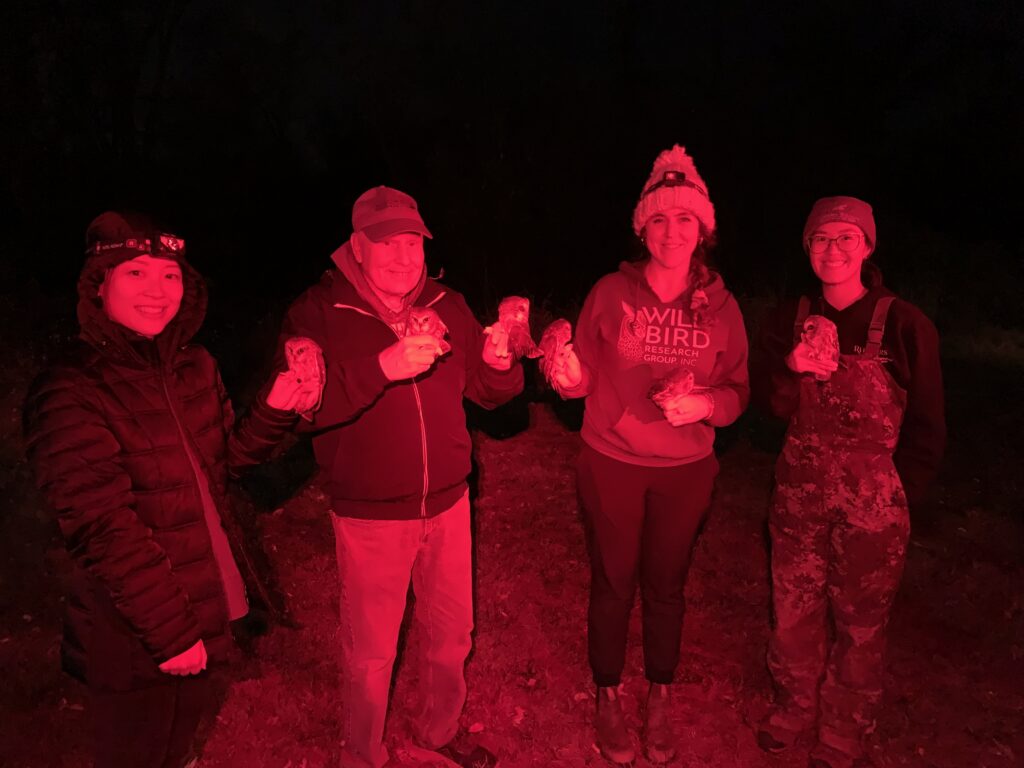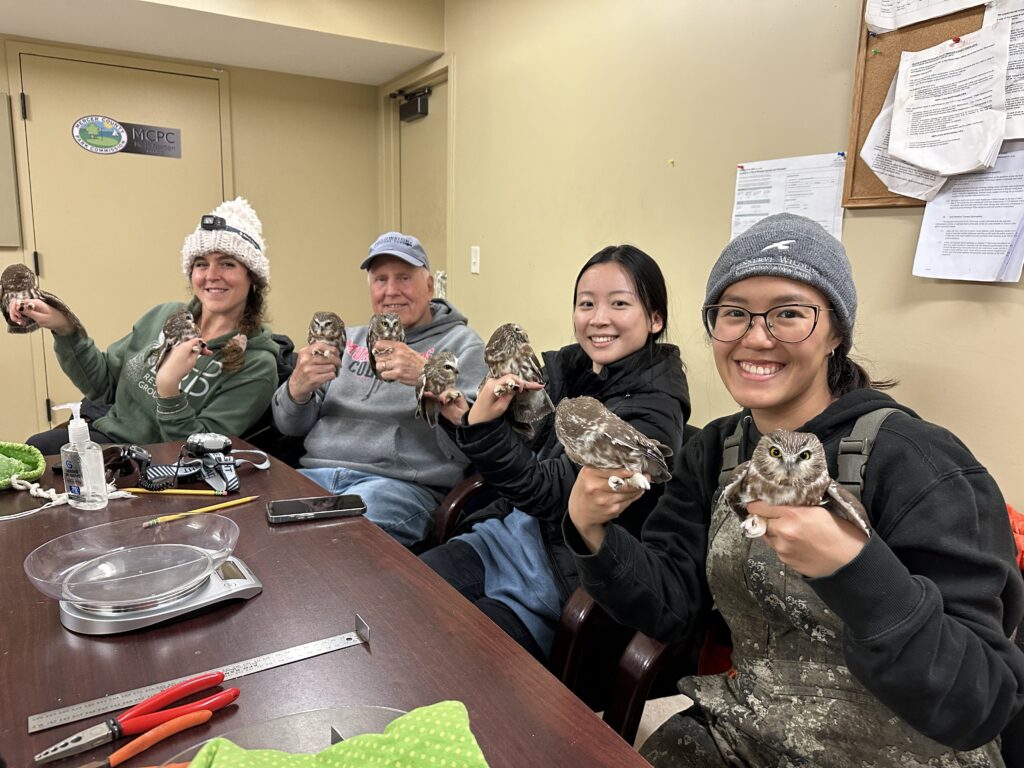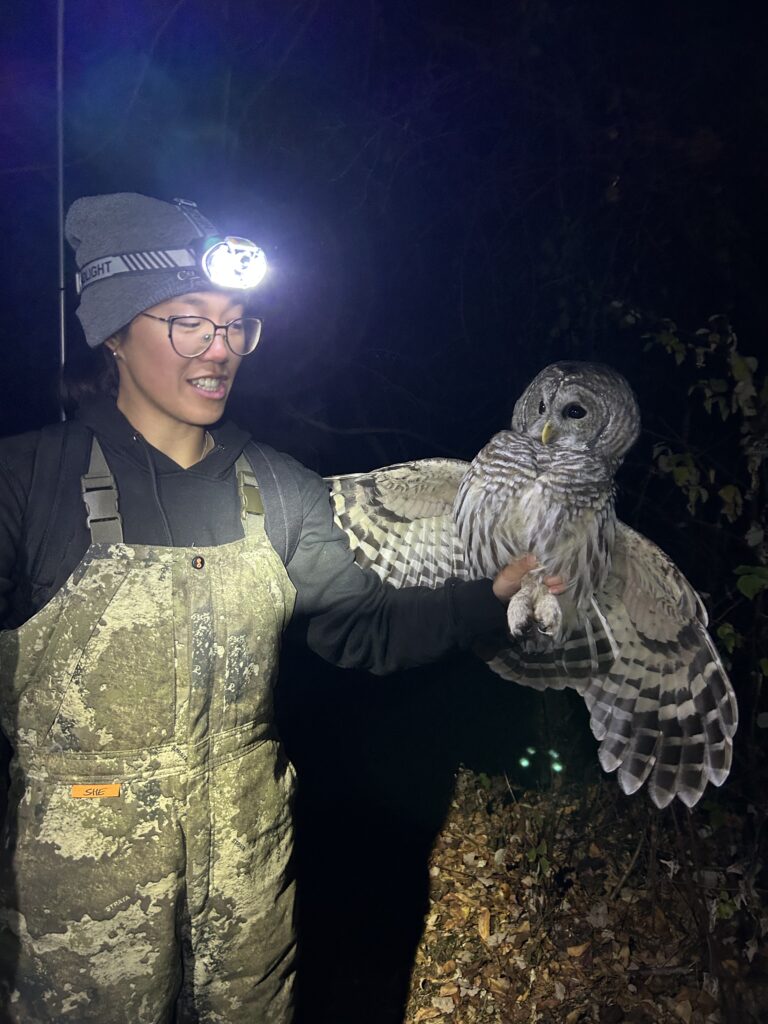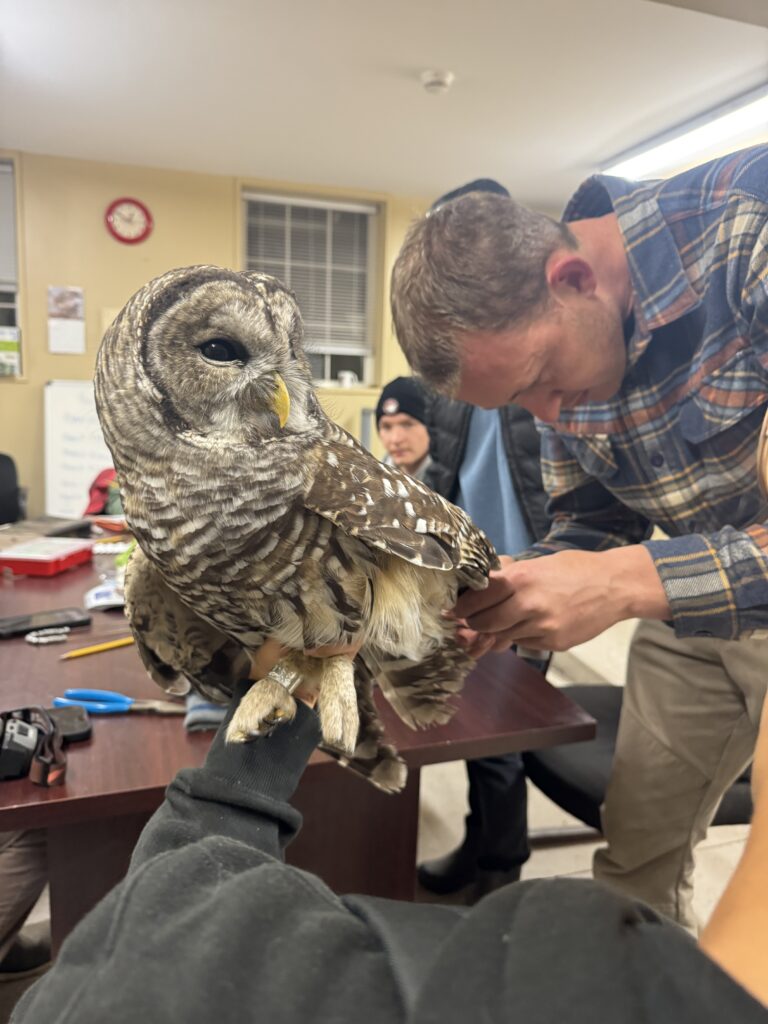
By Morgan Mark
As the days leading into winter grow colder and shorter, I find it harder and harder to burn the midnight oil. However, there is one reason why I and fourteen other volunteers trek into the forest on crisp, cloudless nights, armed with nothing more than headlamps and down jackets. We hope to catch the enigmatic Northern Saw-whet Owl.
For eleven years, Wild Bird Research Group (WBRG) has caught and banded Northern Saw-whet Owls to better understand their migration, demographics, and population trends over time. Twice a week, as the sun melts into the horizon, a group of volunteers criss-cross 30-foot-long mist nets across forest corridors and play the breeding call of males, a serenade only heard during the summer in the more northerly Saw-whet breeding grounds. Whether curious or flabbergasted, migrating Saw-whets alight to investigate the familiar vocalization and sometimes get caught in the net’s gossamer strands, no thicker than sewing thread. We check the nets every 45 minutes, which allows us to quickly extract owls, measure and band them, then send them on their way to continue their migration or nocturnal prowl. When we call it quits, which tends to be about six hours after dusk, we take the nets down, fold them carefully to avoid tangles, and pack them away until the next banding night.

During the height of their southbound fall migration, thousands of Saw-whets may pass over the WBRG banding station in central New Jersey. But, the number of owls migrating on a given night – and therefore the number that we catch – is highly variable (at the start of each session, we try to predict the night’s grand total). The seasonal timing, moon phase, wind speed and direction, and cloud cover all have to be just right to persuade owls to continue their transcontinental journeys.
Fortunately, conditions were perfect on the night of November 2nd. The sky was completely dark and free of clouds, and we hoped that the steady, cold winds from the north were providing owls with a favorable tailwind. However, the night started off slow, and we came back empty-handed after the first net check. But soon, the temperatures began to drop and the owl numbers started to climb. Two Saw-whets, then five, then six, then fourteen. This was the huge migratory flight that we had been waiting for all season. We surpassed my own 16-owl estimate for the night by a long shot. For me, sessions like these were legendary, something that we could only hope to achieve in a given year, especially when we reminisced about the “65-owl night of 2018.”
It was already a superlative night, but the owls weren’t done. As we embarked on our midnight net check, I happened to be at the front of our team of four as we walked down the narrow net lanes. Just as the third net came into view, I noticed it suddenly sag under the weight of a heavy object. Realizing that a soda can-sized Saw-whet weighing 0.2 lb (approximately the weight of a stick of butter) couldn’t bring down a whole net, I rushed over and was shocked to find a large, mottled bird staring at me with its pitch black eyes. I gasped, “We caught a Barred Owl!”

Barred Owls are a threatened species in New Jersey and the third largest owl in the state behind Snowy and Great-horned. This was WBRG’s second ever Barred Owl in over a decade of owl research – the first was caught in 2019 at the same location. After extracting the gargantuan owl from the net, I studied the owl’s namesake silver bars and stared into its obsidian eyes, which lack the bright yellow irises of many owl species. When the Barred Owl tried to fly, its wingbeats hit my face like a gust of wind and sent leaves spiraling into the air.

After taking measurements and carefully examining the plumage, we concluded that this individual was a male and at least two years old. Despite its apparent bulk, this Barred Owl weighed in at 1.8 lb, which is almost 10 times heavier than the Saw-whets we typically catch. After banding the owl and recording all necessary data, the team gathered outside under the new moon to see the Barred Owl off. For a few moments, the owl just sat in lead bander Sean Graesser’s hand, taking a final look around with its jet black eyes. Then, it turned its head and silently took off into the night, fading into the darkness just as quickly as it came. Because Barred Owls don’t seem to migrate, there’s a very good chance this individual will remain in the area. So, the next time we hear an echoing Who cooks for you? we’ll wonder if it’s the same magnificent owl watching us from the shadows.

